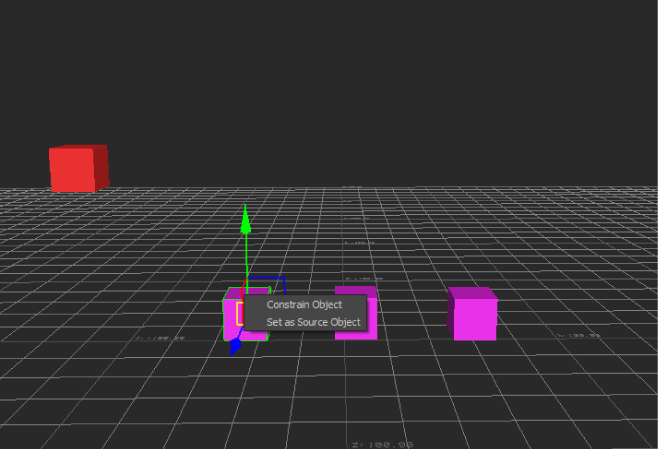The Mapping constraint lets you map one Parent/Child relation to another Parent/Child relation. You can use it to scale movement
between limbs or other structures of different sizes.
To map Parent/Child constraints to one another:
- Select a Mapping constraint from the Asset browser’s Constraints folder and drag it into the Viewer window.
- If you drag it into an empty area of the Viewer window, the Mapping constraint template appears in the Constraint settings.
- If you drag the constraint on top of an object, a contextual menu appears asking if you want to assign the object as either
the Source (parent) or Constrained (child) object .
- Assign the object that you want to be the Child object of the Parent/Child relation that inherits translation and rotation
from the source Parent/Child relation to the Constrained object (child) cell.
- Assign the object that you want to be the Parent object of the Parent/Child relation that inherits translation and rotation
from the source Parent/Child relation to the Reference (parent) cell.
- Assign the object that you want to be the Child object of the Parent/Child relation that sends translation and rotation information
to the constrained Parent/Child relation to the Source object (child) cell.
- Assign the object that you want to be the Parent object of the Parent/Child relation that sends translation and rotation information
to the constrained Parent/Child relation to the Source reference (parent) cell.
- Click Lock in the Constraint settings to lock the position of the objects to be constrained.
- Click Active to activate the constraint.
